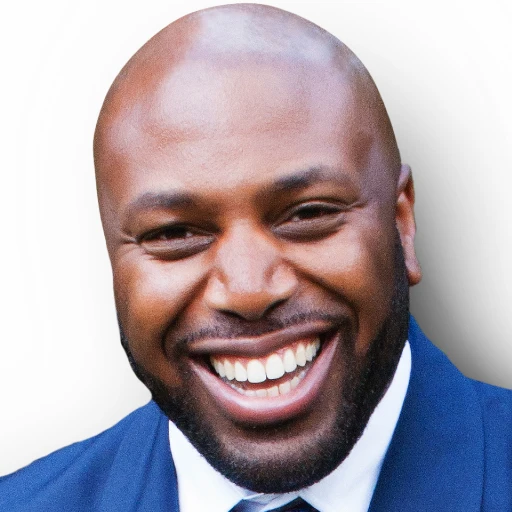In brief:
When it comes to planning a successful agile project, there are a few key techniques that organisations should leverage. One of the most important is having a clear vision of the project’s goals and objectives. Without this clarity, it can be difficult to stay on track and ensure that everyone involved in agile planning is working towards the same goal. Additionally, it is important to focus on delivering sprints incrementally. This will allow teams to get feedback from users sooner and make necessary adjustments along the way. Another critical technique is creating an effective team structure. Having the right people in place with the appropriate skill sets is essential for success. Finally, regular meetings should be held to track progress and ensure that everyone remains up-to-date on what needs to be accomplished.
When it comes to successfully completing agile projects, planning is essential. Organisations must use agile techniques to ensure that their team is working efficiently towards reaching the project’s goals. In this blog post, we will discuss the 8 most important techniques for planning successful agile projects. By using these techniques, your organisation can be sure that they are taking the necessary steps towards a successful outcome.
What is an Agile Project?
An agile project is a smart way to help ensure that any task or goal is completed efficiently, effectively, and to the desired quality. It breaks the project down into milestones and tasks, encouraging everyone involved to work together to reach the objective. It also offers flexibility so that if something doesn’t go as expected or changes come up during the project, it’s easy to adjust accordingly. Agile projects can be used in just about every industry and offer an effective way for teams to stay on track while working towards success.
Why is planning essential for success?
Planning is a key element when it comes to successful agile projects. Without the proper planning, tasks can be completed inefficiently and quality may suffer. Having a plan gives everyone involved a clear target to work towards and keeps the project on track. Plus, it’s essential for being able to adjust your strategy if something changes during the project – with good planning you can easily change direction without too much hassle. So, there’s no doubt that planning is essential for agile projects!
Miro: Get your team organised with Miro Kanban Framework
AFFILIATE AD
Kanban has been the go-to framework for teams everywhere who are looking to organize their processes and get things done. Thanks to Miro’s Kanban Framework, it’s never been easier to make sure that everyone is working from the same plan – and done in style. With Miro’s intuitive drag and drop cards and boards, you can quickly map out sprints, track product launches, outline hiring processes, and so much more – all in one master template. The best part? You can also keep an eye on potential roadblocks and risk factors so you can stay ahead of the game. Make your team unstoppable with Miro Kanban Framework!
8 Tips for Planning a Successful Agile Project
Tip #1 – Have a Clear Vision of the Project’s Goals and Objectives
A successful Agile project starts with having a clear vision of goals and objectives. This vision will inform the project plan, as well as the day-to-day decisions that need to be made. Before getting started, consider the bigger picture: What are the end goals of your project? What tasks need to get done in what order? Knowing this ahead of time will help determine how the work should be broken down and how often team members should check-in and report progress. With a concrete understanding of the desired end result, you’ll be able to effectively break up tasks into smaller dives and keep everyone on track throughout each part of the process.
Tip #2 – Focus on Delivering Sprints Incrementally
One of the most important pieces of advice for planning and executing a successful agile project is to focus on delivering sprints incrementally. This means that instead of tackling the entire project up front, break it down into manageable chunks that can each be completed and evaluated individually. By focusing on smaller goals first, teams can ensure they are staying on track while also keeping a steady flow of forward progress going. This method also allows teams to quickly adjust direction if something doesn’t go as planned or accommodate any changes in priorities along the way.
Tip #3 – Create an Effective Team Structure
When it comes to creating a successful agile project, having an effective team structure is vital. It’s important that you have the right roles represented – people who have the skillset required to focus on specific tasks and meet specific deadlines. What’s more, the team should be composed of individuals who are committed and willing to collaborate. Make sure everyone understands their responsibilities and how they fit in with the goals of the group as a whole! With an effective team structure in place, you’ll be able to keep your project running smoothly and see it through to completion with minimal difficulties.
Tip #4 – Hold Regular Meetings to Track Progress
Regular meetings are crucial to the success of an agile project. You will want to make sure you meet at least once a week, if not daily, to review progress and plan accordingly. Not only will you be able to get feedback from your coworkers, but it also allows everyone to stay on task and track their progress. Make sure each meeting agenda is clear and brief (no long rambling monologues!) so that everyone can get down to business quickly. Furthermore, remember that these meetings are essential for monitoring key performance indicators as well as identifying potential issues early on—so don’t skip them!
Tip #5 - Utilise User Stories To Map Out Scope of Each Task
User stories are a valuable asset when it comes to Agile projects. They help you articulate the goals and requirements of a particular task so that everyone involved has a better understanding of what needs to be accomplished. When used effectively, they can provide an actionable blueprint for team members so they know exactly what’s expected of them. User stories also make it easier to manage scope creep and prevent tasks from going on too long or over budget since each user story covers only one part of the larger project. Utilising user stories can save time and money in the long run while keeping your team organised and focused on completing your Agile project successfully.
Tip #6 - Keep Communication Open Among Stakeholders
The sixth tip for ensuring your agile project is successful is to keep communication open among stakeholders. This means being transparent about decisions, plans, and changes with everyone who is invested in the outcome of the project. When there is good communication, stakeholders are more likely to trust the project team and feel like they are a part of the process. This can help avoidScope creep because stakeholders are less likely to try to make changes if they feel like they are being kept in the loop.
Tip#7 - Manage Changing Priorities
Changing priorities are a fact of life in any agile project, and this makes it crucial to keep track of them. When planning an agile project, evaluating and assigning relative priorities to tasks is paramount. Before beginning, set up criteria for assessing the importance of a task – for instance, with urgency based on deadlines or impact on stakeholders. Once you have a list of criteria, create a ranking system to consistently evaluate and understand the changing needs of your project. Make sure to frequently reassess against these criteria so that your development team stays up-to-date on any shift in direction that may be needed as your goals change. With this approach to managing changing priorities, you can rest assured that nothing gets overlooked even when you’re dealing with rapidly changing requirements.
Tip#8 - Balance Technical Debt
When planning an agile project, it’s important to find the right balance between short-term agility and long-term optimisation. You want to make sure you’re proactively engaging with technical debt – paying down some now so it won’t hurt or slow your progress in the future. While it’s tempting to push off dealing with technical debt in favor of focusing on features or other projects, taking some time each sprint to take care of technical debt will save a lot of headaches and make your project much more successful over the long term.
Dwayne Campbell
Product Manager | Agile Coach | Business Analyst | Service Designer
With over 15 years of experience in product management, Dwayne is highly skilled in product development and business analysis. He has a proven track record in delivering products and services that include deploying large-scale global e-commerce & web service platforms and developing new citizen-based services that adhere to strict standards around inclusion and accessibility.
Top 3 frameworks that use agile project principles
Agile project principles have revolutionised the way modern teams work together. Nowadays, it’s easier than ever to collaborate on complex projects and produce amazing results. To maximise the potential of agile principles, organisations are increasingly turning to frameworks like Scrum, Kanban, and Scaled Agile Framework (SAFE).
Scrum
Focuse on incremental problem-solving
A popular framework used in agile project management is Scrum, which encourages teams to break down large tasks into small sprints, focusing on incremental problem-solving. This helps break the project into manageable chunks, providing teams an efficient structure that allows them the flexibility of changing pathways should they hit any obstacles throughout the course of the project. Scrum has been used effectively in many successful projects, making it a great choice for those working with agile principles.
Kanban
Kanban encourages continuous improvement
Kanban is a well-known framework that emphasizes the use of agile project principles. It encourages teams to focus on continuous improvement in order to maximize efficiency and deliver high quality results on time. To do this, Kanban uses visual management techniques which make it easier for teams to visualize their workflow and spot opportunities for efficiencies. Furthermore, Kanban provides an easy-to-use platform with features like “pull” systems, work in progress limits, flow boards, and more. Overall, Kanban is a great choice for any team looking to speed up their project cycle times and optimize their processes.
Scaled Agile Framework (SAFE)
Provides guidance for scaling agile to larger projects
For larger organisations and complex projects, the Scaled Agile Framework (SAFE) promises to provide the structure needed for success. SAFE provides guidance on how to scale agile techniques up for larger initiatives, helping teams define their processes, measure performance, and effectively manage change. It also helps with risk management, helping teams to identify and mitigate risks before they become issues. SAFE is a great option for organisations looking to maximize the impact of agile project principles on their long-term initiatives.
By leveraging one or all of these three frameworks, teams can easily adopt agile principles to ensure that their projects are successful. With the right framework in place, organisations will be well-prepared to take on the challenges of agile project management and reap its rewards.
In conclusion:
Agile project principles have revolutionised the way modern teams work together. By leveraging agile techniques, such as incremental sprints, user stories, and regular meetings, organizations can ensure that their projects are successful. Additionally, frameworks like Scrum, Kanban, and the Scaled Agile Framework (SAFE) provide guidance for larger initiatives and help teams navigate their projects more easily. With the right framework in place, organisations will have all the tools they need to ensure that their agile project is a success.
Happy planning! Good luck with your agile project.
Reference Sources
- None








